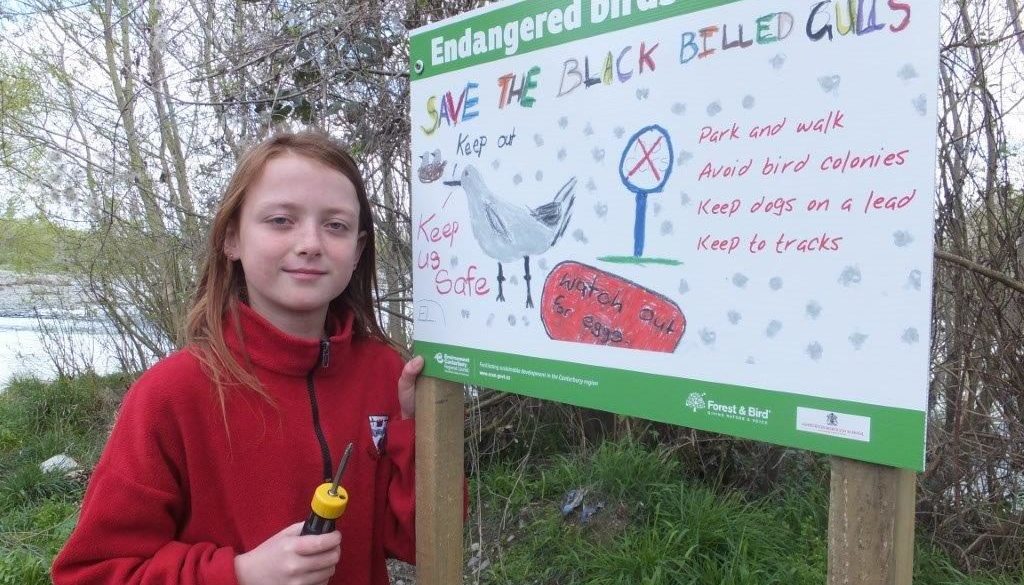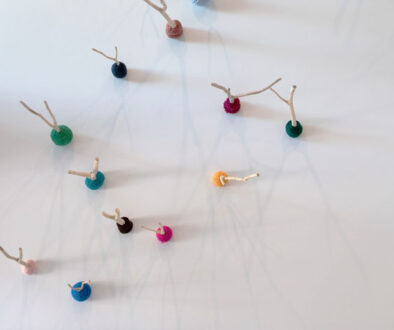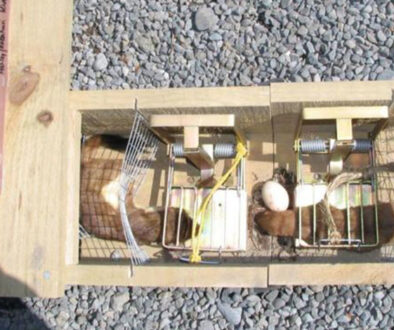Ashburton Borough School signs protect black-billed gulls
Earlier this year six posters were chosen following a competition at Ashburton Borough School. Copies of these will be seen at access points along the Ashburton River. In this photo, Ashburton Borough Greenie, Emma Moodie, helps erect her endangered bird sign to alert people to the native birds nesting in the Ashburton River.
At present the critically endangered black-billed gull is trying to set up a colony below the Ashburton Bridge but flooding and freshes as well as few weed free areas of clean shingle riverbed make it hard going for them.
Over several years another endangered riverbed bird, the black-fronted tern, has nested near Trevors Road.
The dainty tern is often seen following the plough or feeding in the rural areas, but it is totally dependent on clean braided rivers for breeding. An endangered species population can only be maintained if it has a good number of chicks surviving each season.
Unfortunately the colony is near a popular access point to the river and the successful fledging rate has been poor, which means these birds are not holding their own.
One of the causes of poor breeding in terns is disturbance. The constant people activity can cause the terns to abandon their nests. Black fronted terns are only found in New Zealand.
Life for the braided river birds is precarious during the nesting season from September to January. If these birds were kiwis we would not be driving near their breeding area, walking dogs, or causing a disturbance.
Ashburton Borough Greenies hope that everyone will take care of our braided river birds this season.




